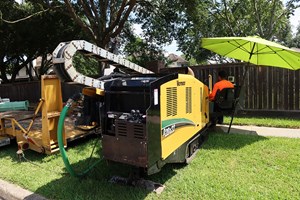March 2024 Vol. 79 No. 3
Features
Fiber Broadband Association reports NA hit highest annual FTTH growth record
The Fiber Broadband Association (FBA) recently announced results of its 2023 North America Fiber Provider Survey. Performed by RVA LLC Market Research & Consulting (RVA), the research concludes that 2023 set a new record for the highest annual FTTH growth; nine million homes were newly passed by network operators last year alone, according to Mike Render, RVA founder and CEO.
The survey notes several categories of progress, first and foremost the record reach of FTTH. Homes passed and being marketed to consumers in the U.S. grew 13 percent in 2023, to 78 million homes. Fiber broadband now passes nearly 69 million unique U.S. homes (excluding second or third passings of the same home). Fiber providers in the U.S. are experiencing a 45.4-percent average take-rate, versus unique homes passed, and some report significant first-year take-rate improvement in 2023.
Overall Canadian passings had 12-percent growth in 2023, to 12.1 million. Fiber now passes 11.2 million unique Canadian homes and fiber uptake in Canada is estimated at 44.6 percent (including incumbent providers and CLEC providers utilizing fiber installed by others).
Diversity in fiber provider type is increasing over time too, most noticeably the introduction of rural electric fiber broadband providers within the last five years. While their overall share of homes passed is currently the smallest, at 2.2 percent, rural electric providers have quickly entered the fiber broadband market and now almost match homes passed by municipalities, at 2.7 percent.
Incumbent telephone tier 1 and derivative fiber providers still lead with 64.7 percent of homes passed. Incumbent telephone tier 2 and 3 providers have 11.3 percent of homes passed; private competitive providers/CLECs have 9.9 percent; and MSO/Cable operators have 9.1 percent.
Significantly, fiber broadband has now officially passed the half-way point in the quest to provide fiber to all U.S. homes – at 51.5 percent of primary homes. Fiber broadband also passes a growing percentage of second homes or short-term rentals. RVA estimates the total available market remaining for FTTH may be over 100 million homes, including second and third passings in many areas.
Challenges remain
However, challenges remain, especially for small providers. Based on this year’s survey, the largest perceived obstacle e is labor availability and quality of contractors, followed by rising construction costs, materials concerns, permitting, BEAD regulations and more.
“We’ve known for years that the benefits of fiber outweigh any other broadband technology available, but it is always refreshing to have this annual survey validate those facts,” said Deborah Kish, FBA vice president of research and workforce development. “Year after year, our research demonstrates the growing preference for fiber and the increased success of the fiber broadband ecosystem in extending the reach of high-quality broadband networks. The latest rounds of federal and private investments will serve as huge propellants to the next round of fiber broadband success.”
The Fiber Broadband Association is the largest and only trade association that represents the complete fiber ecosystem of service providers, manufacturers, industry experts and deployment specialists dedicated to the advancement of fiber broadband deployment.





Comments